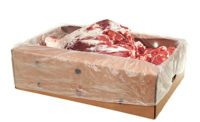Since Executive Order 13777 Enforcing the Regulatory Reform Agenda was signed in 2017, Regulatory Reform Task Forces have evaluated and proposed changes to existing regulations to repeal, replace and modify cumbersome requirements. Several labeling requirements for meat and poultry products are under review.
Last spring, USDA Food Safety and Inspection Service (FSIS) Administrator Carmen Rottenberg said at the North American Meat Institute’s 2019 Meat Industry Summit that a small Texas producer had written to the agency asking about dual-labeling regulations. He wanted to know why products weighing more than 1 pound are required to be labeled in pounds and ounces.
The answer? Agency historians said dual labels were created to assist housewives with various recipes. Today, however, the ramifications of that decision can be costly for smaller processors. Additional costs are associated with the equipment needed to print labels with dual net weight statements than single net weight statements, which can hamper start-up and small producers’ ability to compete with larger producers.
The proposed rule would allow establishments that produce meat and poultry products in packages less than 1 pound or 1 pint and less than 4 pounds or 1 gallon to use one unit of measurement.
“On April 16, 2019, FSIS announced that it was proposing to amend labeling regulations to remove duplicative net weight and net content requirements for packages that contain certain amounts of meat or poultry products,” says an FSIS spokesperson based in Washington, D.C. “The comment period for the proposed rule closed on June 17, 2019. At this time, FSIS is still analyzing the comments received.”
Simplifying the unit measurement would also provide more consistent labels, prevent confusion for companies as to which products need a dual or single net weight or content declaration, limit misprinted labels and offer more space on the label, said FSIS.
Current labels can be used until they run out or even indefinitely, said the FSIS.
This fall, the U.S. Cattlemen’s Association (USCA) petitioned the FSIS to limit the voluntary use of Made in the USA claims to only beef from the USA: “To eliminate the likelihood of confusion and to better inform consumers, USCA contends that voluntary labels indicating Made in USA, Product of USA or similar content should be limited to beef from cattle born, raised and harvested in the United States.” The petition is still under review.
Country of origin labeling (COOL) requirements were repealed in 2015. Since then, no official definition of U.S. beef has been created — or specific labeling requirements for Made in USA claims. The USCA notes some beef born and raised in other countries, such as Mexico or Canada, are being transported to the U.S. for slaughter and could be mislabeled as an American beef product.
The listing for foreign countries eligible to export to the U.S. is posted to the FSIS website after going through the Federal Register process. Before, eligible countries were codified in the Code of Federal Regulations (CFR), which can be cumbersome and outdated.
Other 2019 petitions currently under review are The Lamb Company’s request to repeal the definition of spring lamb; the Center for Science in the Public Interest’s request that FSIS prohibit the statement No Nitrate or Nitrite Added and Uncured on product labels that have used any source of nitrate, including non-synthetic sources; and the National Bison Association’s request that FSIS amend 9 CFR 412.2 to allow for the generic approval of labels of products that receive voluntary FSIS inspection (such as exotic species under 9 CFR part 352). NP




Report Abusive Comment